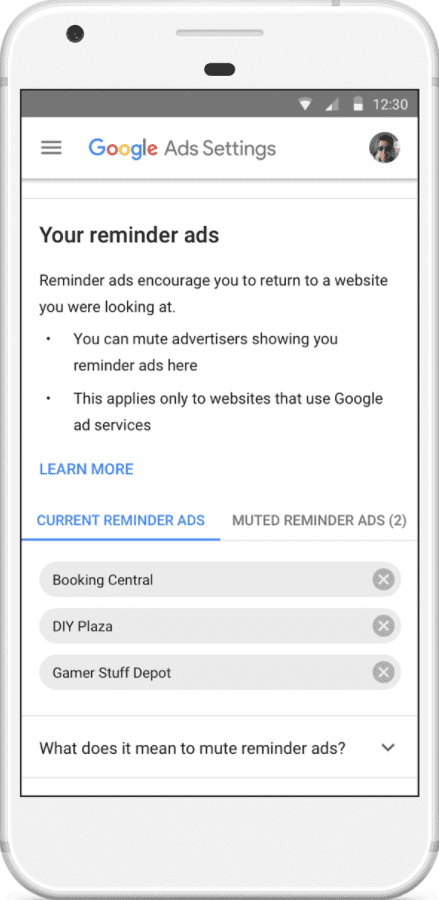Whether they realise it or not, most people will have been exposed to remarketing ads whilst surfing the web
Remarketing ads are text, image or video ads which appear all over the internet to encourage you to return to a website you visited previously. The theory behind this is that if you didn’t covert (buy something, make an enquiry, etc) on your first visit to that site then you might do if you return for a subsequent visit.
As an advertiser, there are a number of platforms you can use to display your remarketing ads, such as Facebook and Google AdWords. Of these, AdWords is probably the one that will give you the widest reach.
Using remarketing in AdWords is a fairly straightforward process. First you need to create an audience list – i.e. define which people you want to remarket to. This could be, for example, everyone who has visited your website in the past 30 days, or it could be everyone who visited your site but did not fill in an enquiry form. Then you create your ads and specify how much you are willing to pay each time someone clicks on one of these ads to return to your site.
You can also control how often any one person will see your ads and what type of websites your ads will appear on. These two points are important but they are often overlooked by advertisers.
By using Site Category Options in AdWords you can stop your ads appearing on certain types of website which might harm your brand by association – for example, sites to do with death and tragedy, or sites with sexually explicit content.

To limit how often a person sees your ad, you can use Frequency Capping. The reason it’s important to do this is because if a user sees your ad countless times per day it can be annoying and hence counter-productive to your efforts to entice them back to your site. Also, a person who feels like you are “stalking” them because of over-exposure to your ads may form a negative view of your brand and defect to one of your competitors instead.
Remarketing campaigns that don’t use Frequency Capping will also tend to suffer from a low click through rate (CTR). This can have a negative impact on Quality Scores, leading to higher costs and a reduced number of impressions.
For this reason it is generally recommended that you set a Frequency Cap of 3 impressions per user per day.
Frequency Capping has recently become even more important due to a change in how Google lets people control the types of ads they see. Back in January 2018 Google updated their Ads Settings tool so as users can now see a list of which advertisers are targeting them with remarketing ads (or “reminder ads” as Google calls them in this context).
Not only can people now see who is remarketing to them, but they can also choose to mute reminder ads from selected advertisers. When an advertiser is muted, the user will no longer see any remarketing ads from them for the next 90 days.
The muting option now syncs across devices, so if someone mutes your ad when they are browsing on their phone, you’ll also be muted on their computer.
If you treat your audiences correctly, your remarketing campaigns can have high conversion rates and give you a great return on investment. So if you aren’t already using Frequency Capping, now is the time to enable it so as you reduce the risk of annoying people and getting blocked from remarketing to them for three months.
David Miles is a digital marketing consultant, trainer, and published author. For the past 13 years David has owned and run digital marketing agencies and training businesses large and small across the UK and Europe. Currently, David is the founder and CEO of The PPC Machine, a boutique agency that helps medical professionals grow their practices using pay per click advertising platforms.







